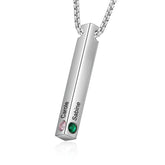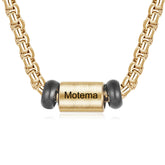What Is Electroplating? Process, Benefits, and Applications Explained
Electroplating is a very interesting technique that has been in development for decades, if not centuries. It is the process by which objects are covered with a thin layer of metal using electricity, enhancing their appearance, durability, and functionality. From the bright, shiny chrome bumper on a car to the luxurious gold finish on jewelry, to the corrosion-resistant plating on industrial tools, electroplating is a behind-the-scenes hero in manufacturing and design.
The science of electroplating is discussed along with its practical applications, the advantages, and challenges of this transforming process in the following paper.
How Does Electroplating Work?
The basic form of electroplating is a chemical and electrical process. It uses metal ions from solution and transfers them onto the surface of another material by creating a thin symmetric coating.
The Main Components of Electroplating
There are three major ingredients involved in electroplating:
- Anode (Positive Electrode): The metal literally to coat the object. Example: a gold anode for gold plating.
- Cathode (Negative Electrode): The object that is to be plated; the piece of jewelry or the car part.
- Electrolyte Solution: The solution containing metal ions through which the coating material is transferred from the anode to the cathode.
The Step-by-Step Process
- Pre-treatment: The object to be plated is cleaned thoroughly to remove dirt, oil, or oxidation that may prevent bonding between metals.
- Electroplating: It involves dipping the object in the electrolyte solution, then connecting it to a power source at the cathode terminal, while the anode dips in, connected to the plus terminal.
- Electric Current: After the current starts, some of the metal ions from the anode would be dissolved into the electrolyte and then be deposited onto the surface of the cathode.
- Termination: After attaining the thickness required, the object is washed, polished, and dried to its final appearance.
Common Applications of Electroplating
1. Jewelry and Fashion
Electroplating in the jewelry industry is viewed as a means of providing affordable luxury. For instance:
- Gold Plating: Coating a thin layer of gold on base metals like brass or silver makes the jewelry look elegant and gives it a high-end finish without bearing the cost of solid gold.
- Silver and Rhodium Plating: These are used to prevent tarnishing and give strength to items such as rings and bracelets.
- Custom Necklaces: Artwork became detailed with the help of electroplating. One can make any particular piece of one's desire with intricate design that will make it unique.

2. Electronics
Electroplating in the electronics industry improves both the performance and the life of electronic components. Examples include:
- Circuit Boards: Plating with copper and gold ensures conductivity electrically while protecting against corrosion.
- Connectors: Nickel and silver plating enhance durability and reliability in some electronic devices.
Were it not for electroplating, many gadgets people have today, like smartphones and laptops, would not work with as much vigor as they do.

3. Automotive and Aerospace
The automotive and aerospace industries are large consumers of electroplating for cosmetic and functional applications.
- Chrome Plating: Chroming adds a reflective, protective finish to chrome car parts such as bumpers and exhausts without allowing these items to rust and wear.
- Nickel and Zinc Plating: This process applies the coating to aerospace components for lightweight durability and resistance in extreme conditions.
4. Medical Devices and Tools
Electroplating is very critical in the medical field, where precision and hygiene cannot be compromised. Examples involve:
- Surgical Instruments: Chrome or nickel plating offers a smooth, resistant finish that makes tools easier to sterilize.
- Medical Implants: Plating with gold and platinum insures biocompatibility and strength in implants, such as pacemakers or joint replacements.
Advantages of Electroplating
Electroplating finds its application in a wide field of areas and covers several advantages, which makes the process indispensable to any industry. The main advantages in this regard are:
1. Improved Durability
Electroplating helps protect the items from corrosion, wear, and tear by adding a protective layer on them. This becomes quite pivotal where an object may be exposed to highly moist areas or certain chemicals.
2. Improved Appearance
A bright, shiny finish can completely alter the look of an object and make it more pleasing to look at. This is just one of many reasons why electroplating has become a staple process in the jewelry, car part, and decoration industries.
3. Cost-Effectiveness
Electroplating involves coating an object with a thin layer of a precious metal, such as gold or silver, which reduces material costs while maintaining luxury in appearance and feel.
4. Enhanced Conductivity
In the field of electronics, electroplating improves the electric conductivity of parts so that a highly improved performance in terms of durability may be achieved.
Challenges and Disadvantages of Electroplating
While electroplating offers many benefits, it also has some disadvantages:
1. Environmental Concerns
The chemicals involved in electroplating can be dangerous to the environment if not handled correctly. Waste removal and controlling chemical runoff are extremely regulated and require complicated filtration systems.
2. Risks of Uneven Coating
If this process is not too well controlled, the metal coating will appear uneven. The unevenness in appearance might give rise to weak spots that could wear out faster.
3. Initial Costs
Setting up an electroplating operation is expensive, especially on an industrial scale, due to the equipment and expertise needed.

Eco-Friendly and Modern Innovations in Electroplating
Following growing public concern for the environment, the electroplating industry has taken great leaps toward greener practices. Innovation in this area not only seeks ways to reduce waste, cut down on toxic chemicals, and promote efficiency.
1. Non-Toxic Electrolytes
Most traditional methods of electroplating involve the use of highly noxious chemicals like cyanides, which pose a great hazard to human health and environmental safety. Some new innovations involve the development of nontoxic electrolyte solutions, eliminating hazardous materials while maintaining high quality.
2. Wastewater Management Systems
Advanced filtration systems and recycling technologies currently enable manufacturers to reutilize water and minimize chemical discharge. By better managing wastewater, companies can reduce their ecological footprint and comply with environmental regulations.
3. Energy-Efficient Electroplating
Today's modern electroplating processes use energy-efficient equipment, including optimized power supplies and low-energy plating techniques. These improvements help not only in cost reduction but also in making the process eco-friendly.
4. Sustainable Metal Sourcing
In industries dependent on the precious metals of gold and silver, there has been a significant surge toward ethical sourcing and recycling programs. Recycled metals are being increasingly used in electroplating to reduce the impact caused by mining.
Do-It-Yourself Electroplating: Is That Possible at Home?
Electroplating is not just for industrial applications but can be done with small items by the hobbyist or do-it-yourselfer. It is an exciting process indeed; one can make the items appear as per their choice, but at all times, caution should be exercised during its process.
What You’ll Need
Following is the list of materials you need to perform electroplating at home:
- A Power source (such as a battery or small DC power supply).
- An electrolyte solution containing metal ions, such as for plating copper: copper sulfate.
- An anode made from the type of metal you want to plate with, such as copper or silver.
- The cathode (the object you would like to coat).
- Safety gear, including gloves and goggles.
DIY Electroplating: Step by Step
- Object Preparation: Clean the object surface before coating, to allow for proper adhesion of the new coat.
- Prepare Electrolyte Bath: Dissolve your metal salts in distilled water to prepare your electrolyte solution.
- Connect the Circuit: Connect both the object (cathode) and the metal (anode) with the power source, ensuring they are covered in solution.
- Electroplate: Connect the power supply and let run for a few minutes, adjusting for the desired thickness of coat.
- Rinse and Polish: Take out the object, rinse with water, and polish it further for an added shine.
TIP: When doing electroplating by yourself, always wear protective gear in a well-ventilated area. Many fumes or substances of chemicals you may deal with could be harmful and may lead to a serious accident upon improper handling or inhalation.
FAQs About Electroplating
1. How Long Does Electroplating Last?
The durability of electroplating will depend on such factors as the thickness of the coating, the type of metal used, and the environment in which the object is put. If treated with care, high-quality electroplating might last for years.
2. Can All Metals Be Electroplated?
Not all metals can be electroplated. Commonly electroplated metals include gold, silver, nickel, and copper, while materials like aluminum require special preparation.
3. How Does Electroplating Differ from Galvanization?
While both are methods of applying a layer of metal to another, galvanization generally refers to the process of applying a zinc coating on iron or steel to prevent rusting, whereas electroplating involves metals for decorative or other functional areas.
4. Is Electroplating Safe for the Environment?
Conventional electroplating involves the use of chemicals and is, therefore, considered an environmental risk. Newer technologies have involved the development of nontoxic electrolytes and wastewater recycling, hence greatly reducing the impact.
Why Electroplating is Important
More than just a technical process, electroplating is a versatile solution that meets the demands of beautification, durability, and functionality on many items used by people in everyday life. It ranges from the gold finish on custom necklaces to corrosion-resistant coatings on tools in industries.
While laden with its set of challenges, most of which relate to environmental concerns, the field continues its ongoing innovations to make this technology safer, more efficient, and ecologically sound. Whether it's fashion, electrical components, or even car production, electroplating is one fascinating meeting of science and art.
Understanding how electroplating works and appreciating its pervasive impact helps us better recognize its value in today's world. Next time you ogle a shiny piece of jewelry or that spotless car bumper, you will know why it has that perfect finish.










